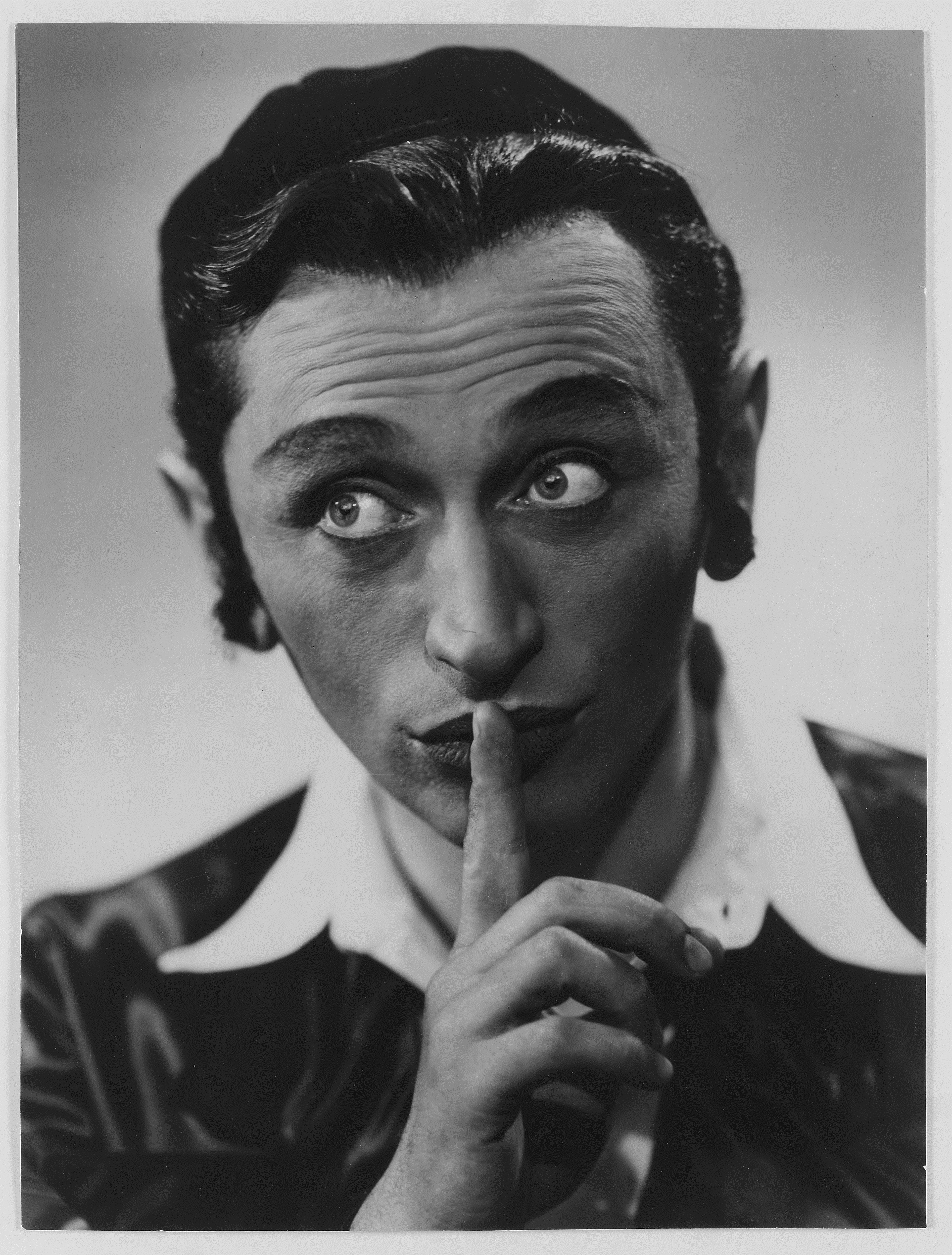Harry Ariel of the Yiddish Theatre
- What can we see?
We can see a man gesturing to someone to be quiet. We can see him wearing a white collared top.
Look closely, what do you see?
- What do we know?
This is a picture of Harry Ariel, who was a Yiddish Theatre actor. He was born in 1915 in Lodz, Poland and was brought up by his two parents, Chaim Dovid and Rochel Ariel, and his four aunts, who were all members of the Yiddish theatre.
Harry Ariel began playing child parts in Yiddish theatre, then later on played juvenile roles. His career took off in Poland in the 1930’s, so much so that he was invited to join a Yiddish Theatre company in London in 1939, however due to the outbreak of World War II he was unable to come to London until 1948. By the time he fled Nazi-occupied Poland and arrived in London, both his parents had died in Auschwitz concentration camp. In London, Ariel became a permanent member of the Yiddish Theatre company “Grand Palais”, later on becoming its artistic director in 1951. He continued performing with the Grand Palais with fellow actor Bernard Mendelovitch until 1970. After this, Harry toured with Yiddish performances until his death, however his plays and songs continue to be performed worldwide.
- What do we wonder?
We might wonder what plays this man performs? We might also wonder who this man is looking at?
What might you wonder?
- Object File
Object number: 1990.115.8
Name: Yiddish theatre hair wig and kippah
Materials: wig – hair, lining – cotton, label – nylon, kippah – silk
Artist/maker: Nathan Wigs Ltd.
Size(cm): diameter – 20.5cm x height – 13cm
In the beginning of the 20th Century, there was a big wave of Jews immigrating to London and setting up Shops and businesses in the East End, which included some Yiddish Theatres. These Yiddish theatres showed plays involving political writing and Yiddish translations of classic plays e.g. Shakespeare. These plays attracted huge crowds of people queuing for hours to get a seat. One of the most famous Yiddish theatres is called the Grand Palais, which was the longest-running theatre of its kind to survive in the East End, which shut down in 1970.
The Yiddish Theatre uses the Yiddish language, which originates from central Europe created by Ashkenazi Jews as early as the 9th Century. Yiddish was created in the Rhine Valley of Germany so that Jews who migrated there from different countries in Europe could talk to one another. The language is written using the Hebrew alphabet and consists largely of German vernacular with elements of Hebrew, Aramaic and Slavic languages.

